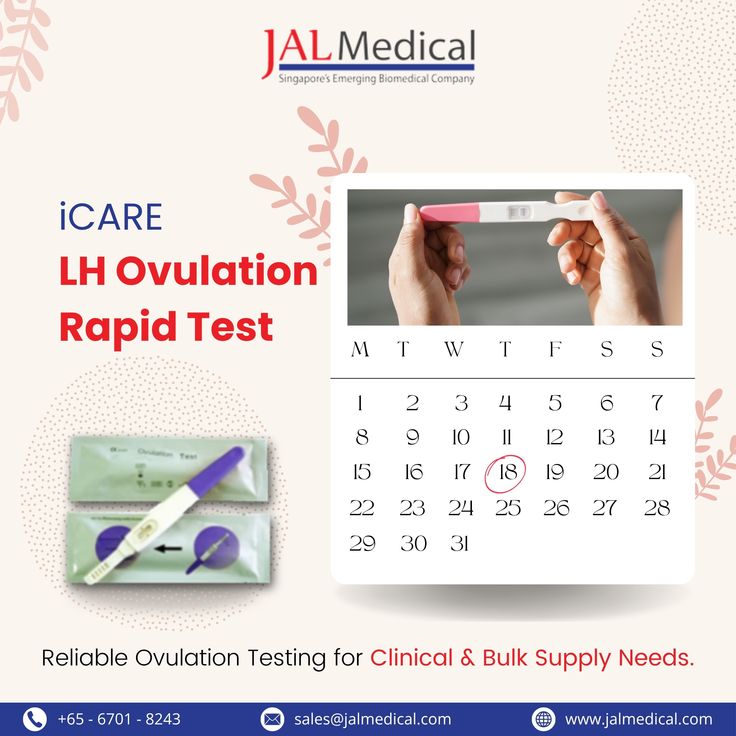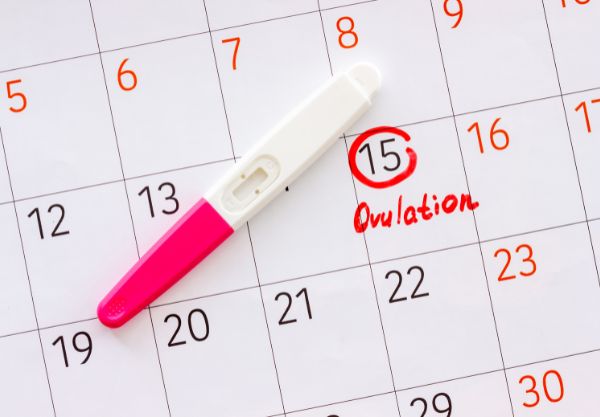Table of Contents
Tracking ovulation is essential for women trying to conceive, especially in rural Myanmar where access to healthcare resources might be limited. Ovulation, the release of an egg from the ovary, is the most fertile period of a woman’s cycle, making it crucial for understanding the right time. Recognizing ovulation symptoms and confirming them with an ovulation test kit can help increase the chances of conception. This guide walks you through how to identify the signs of ovulation and how to confirm it using ovulation test kits, even in areas where resources are limited.

Step 1: Recognize Ovulation Symptoms
Before using a test kit to confirm ovulation, it’s important to first understand the signs that indicate ovulation is near. These symptoms can be tracked without expensive equipment, making them especially useful in rural Myanmar.
Key Ovulation Symptoms to Look for
- Change in Cervical Mucus
One of the most noticeable signs of ovulation is a change in cervical mucus. As ovulation approaches, mucus becomes clear, slippery and stretchy, resembling egg whites. This fertile mucus helps sperm travel to the egg and is one of the easiest symptoms to observe. - Increase in Basal Body Temperature (BBT)
After ovulation, there’s a slight increase in basal body temperature due to the hormone progesterone. Tracking your BBT using a thermometer every morning before getting out of bed can help confirm that ovulation has occurred. This method requires consistent monitoring but is very effective. - Mid-Cycle Pain
Some women experience mild, localized abdominal pain or discomfort when the egg is released from the ovary. This pain, can last from a few minutes to several hours and usually occurs on the side of the ovary releasing the egg. - Increased Libido
Hormonal fluctuations around ovulation often lead to an increase in sexual desire. This can be a natural indication that ovulation is near, making it an essential sign to track. - Breast Tenderness
Hormonal changes during ovulation can cause the breasts to become tender or swollen. This sensitivity can vary in intensity but is a common symptom that many women experience.
Recognizing these signs can be useful, but using an ovulation detection kit will provide a more precise confirmation of ovulation.
Step 2: Confirm Ovulation with an Ovulation Test Kit
In rural Myanmar, where advanced medical resources may be unavailable, using an ovulation test kit is a cost-effective and accurate method for confirming ovulation. These kits typically measure the surge in luteinizing hormone (LH), which occurs 12 to 36 hours before ovulation. This surge triggers the release of an egg, marking the fertile window.
How Ovulation Test Kits Work?
- Ovulation Test Strips
Ovulation test strips are a popular and affordable option. These strips detect the increase in LH levels in the urine. When the test line appears darker than the control line, it indicates that ovulation is imminent. The results are typically ready in just a few minutes.
- Ovulation Prediction Kits
Ovulation prediction kits work similarly to test strips but may come with additional features. These kits usually include a small digital monitor that tracks LH and sometimes estrogen levels, providing a more accurate prediction of ovulation. These kits are especially useful for women with irregular cycles who need more precise tracking. - Ovulation Monitor Kits
An ovulation monitor kit is a more advanced tool that can be used to track hormonal changes. These kits often provide digital readings and are helpful for women looking for detailed insights into their cycle. In rural Myanmar, these kits may be harder to find but are a great option for those who can access them.

- LH Rapid Test
The LH rapid test is another easy-to-use tool that detects the LH surge in urine. These tests work quickly and provide clear results, helping women confirm ovulation within minutes.
Step 3: How to Use Ovulation Test Kits Effectively
Properly using an ovulation test kit ensures accurate results. Below are the steps to follow when using ovulation test strips or an ovulation monitor kit in rural Myanmar.
Using Ovulation Test Strips
- Start Testing at the Right Time
Begin testing a few days before ovulation is expected. For a typical 28-day cycle, this is usually around day 10 or 12. For those with longer or shorter cycles, the start date will vary. - Collect a Urine Sample
Test using urine collected in the afternoon, as LH is typically higher at this time. It’s best to avoid using the first urine in the morning, which may not show the LH surge as clearly. - Dip the Test Strip in the Urine
Dip the ovulation test strip into the urine sample for 5-10 seconds, following the manufacturer’s instructions. - Wait for the Results
Wait 3 to 5 minutes for the result. If the test line appears darker than the control line, ovulation is likely to happen within the next 12-36 hours. This is the optimal time for conception. - Track the Results
Track the results over several days. In some cycles, you may see a faint line at first, followed by a darker line. It’s important to test each day until the LH surge is confirmed.
Using Ovulation Monitor Kits
- Set Up the Monitor Kit
If you’re using a digital ovulation monitor, ensure it’s set up properly according to the instructions. Some kits may need calibration or battery replacement, so it’s essential to follow the setup steps carefully. - Test Daily
Test at the same time every day to get consistent results. These monitors typically require daily testing, which will allow you to track the changes in LH and estrogen levels leading up to ovulation.

- Read the Results
The ovulation monitor will provide a digital result indicating the LH surge. Once the monitor detects the surge, it confirms that ovulation is about to occur, allowing you to time intercourse effectively.
Step 4: Time Intercourse for Conception
Once you confirm ovulation using an ovulation detection kit, it’s important to time intercourse correctly to maximize the chances of conception. The most fertile days are typically the 1-2 days before ovulation and the day of ovulation itself.
Optimal Timing for Intercourse
- Fertile Window: The best time for conception is 1-2 days before ovulation and the day of ovulation. This is when sperm is most likely to meet the egg.
- Frequency of Intercourse: Having regular intercourse every 1-2 days during the fertile window increases the chances of conception.

Conclusion
For women in rural Myanmar, where access to healthcare and fertility specialists may be limited, understanding ovulation and confirming it with Jal Medical, as a leading wholesale LH ovulation test kit supplier provides a valuable tool for increasing the chances of conception. Recognizing the signs of ovulation such as changes in cervical mucus, BBT rise and pain can give useful insights, but confirming with ovulation test strips ensures a more precise understanding of the fertile window. By following the steps outlined in this guide, women can track ovulation effectively, even in areas with limited resources and enhance their chances of conception.
FAQs About Ovulation Test Kit
How accurate are Ovulation Test Strips?
Ovulation Test Strips are generally accurate when used correctly. They detect the LH surge, which is a reliable indicator of ovulation, providing clear results within minutes.
How do Ovulation Prediction Kits work?
Ovulation Prediction Kits detect changes in hormone levels (usually LH or estrogen), indicating when ovulation is likely to occur. These kits often come with a digital monitor for more precise tracking.
Can Ovulation Monitor Kits be used in rural Myanmar?
Yes, Ovulation Monitor Kits are portable and can be used in rural Myanmar. They may be more expensive, but they provide detailed hormone tracking and clear results, which can be very helpful for women with irregular cycles.
When should I start testing for ovulation?
It’s best to start testing with ovulation test strips a few days before ovulation is expected. For a regular 28-day cycle, start testing around day 10. Adjust the start time for shorter or longer cycles.
How can I improve my chances of conception using Ovulation Kits?
Using ovulation detection kits to confirm ovulation and timing intercourse around the most fertile days (1-2 days before and on the day of ovulation) will significantly increase the chances of conception.






